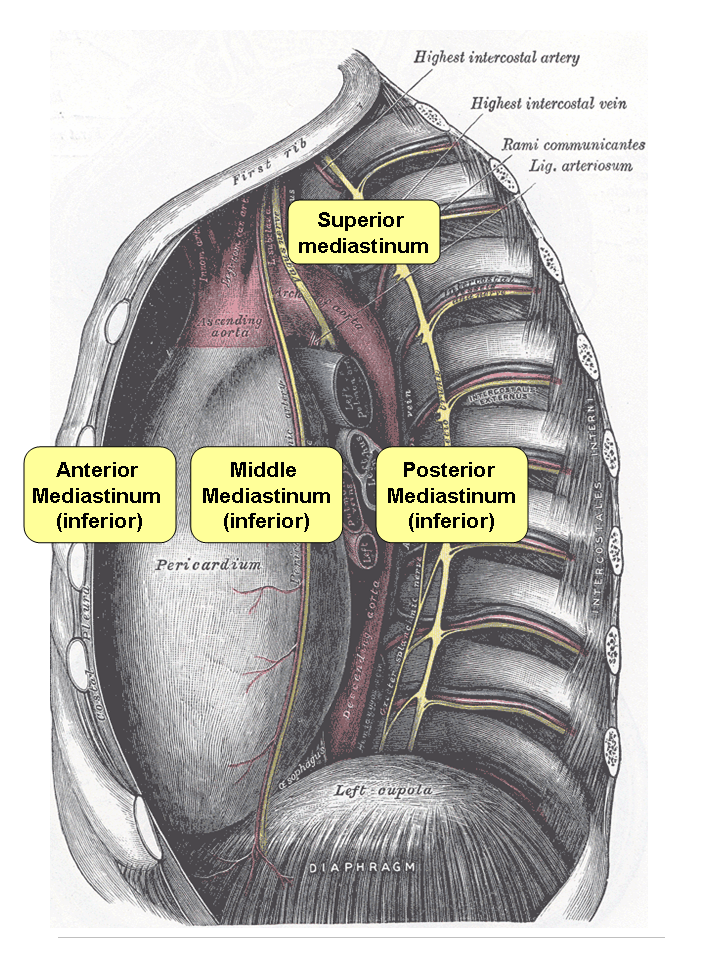Okay. I know just from reading the title of this post many
may start thinking this is going to be some sort of anatomy lesson with medical
terms they’ve never heard of, nonetheless pronounce. No worries though, the
word “mediastinum” is a term to describe the chest wall. For you science nerds
who want to know more, go here. For the rest of us, just understand that this
post is all about the chest wall, and more specifically, the chest wall around
your back. And even more specific, the upper back. To have lower back pain is
common and so is neck pain, but look who is in the middle,….the upper back.
The upper back is the middle man between the lower back and
the neck and what lies on the upper back as if it is a saddle? The scapulae
(shoulder blades). We can call the rear chest wall the posterior mediastinum
and we can also include with it the posterior thoracic wall (for some anatomy
nerds, they’ll point out that the two are separate but for simplicity’s sake,
we’ll group them together). The thoracic spine (the spinal aspect of the upper
back) with the rib cage attached to it plays a major role in dissipating loads
from the lumbar and cervical spine as well as the shoulder complex. This area
is also greatly involved with our breathing. Just look at any young child after
they’ve been running around and you’ll see just how well the thoracic ribcage
is involved with breathing.
I remember when I was in physical therapy school, we were
taught that an excessive amount of kyphosis (a natural curvature of the
thoracic spine) was not “good” posture and that “strengthening” the muscles
around the upper back and shoulder girdle would take a load off of the neck and
lumbar spine and shoulders. What was not as common (or at least emphasized in
school) was the opposite, which is considered a flattened thoracic spine
kyphosis (or flat spine for short). Both excessive (“hunchback”) and deficient
(“flat back)) thoracic curvatures can contribute to aberrant stress to the rest
of the body.
The posterior mediastinum and stress
Right around the posterior mediastinum and the posterior
thoracic wall is the sympathetic chain which is a part of the sympathetic
nervous system (SNS), or the “fight or flight” aspect of our autonomic nervous
system. The sympathetic chain has connections to our organs that feed them info
about stress. All the soft tissues of the upper back can affect the sympathetic
chain. For example, a lack of mobility of this area can increase the amount of
tension and thus stress to the nerve tissue. Of course you’re not going to die
from this, but in theory, it’s an extra physiological load on your bodily
systems. It is common for people to lack flexion in this area and an increase
in extensor tone of the spinal muscles can facilitate a sympathetic stress
response with an over active diaphragm muscle which in turn functions more as a
postural stabilizer as well as a respiratory muscle. The result is a deficient
breathing pattern where the anterior and superior aspects of the lungs and
chest wall are expanded leaving the lateral and posterior aspects “flat”. Take
a deep breath right now and notice how much you raised your shoulders or sat up
tall (extension) with your inhalation. I bet you didn’t feel any air going into
your upper back? Not convinced this area
is important? Check out this link where a study of patients who underwent
surgery for instrumentation for scoliosis correction and had damage to the
sympathetic chain and experienced changes in temperature perception and
perspiration.
When you perform a lot of overhead weightlifting activities,
you’re basically facilitating a constant stress response as far as posture is
concerned and decompression of the area is necessary to balance the soft
tissues and lessen the tensional load on the sympathetic chain. One simple
self-help way to decompress is to improve your ability to flex the thoracic
spine.
Seated Wall Reach
Sit up against a wall with your buttocks and lower back up to
about bra strap level in contact with the wall. Pull your knees towards you
with your feet as close to your hips as comfortably as possible. Place your
arms over your knees and reach forward. Exhale and reach forward. Inhale and
remain where you are. Every time you exhale, reach a little more forward and
every time you inhale, imagine filling up the upper back area up with air
(which should be comfortably off the wall with the reach movement). Perform 4-5
breaths and then rest. Perform 3-4 sets of this.
Now that you are armed with this new information, you can apply it to any exercise; especially exercises where the spine is in full extension and loaded. Just imagine filling the posterior chest wall up with air every time you inhale to help mobilize the area and offset any common stiffness of the upper back.


1 comment:
That's really awesome blog because i found there lot of valuable Information. as we provide MDMA therapy Denver at affordable prices. for more info visit our website.
Post a Comment